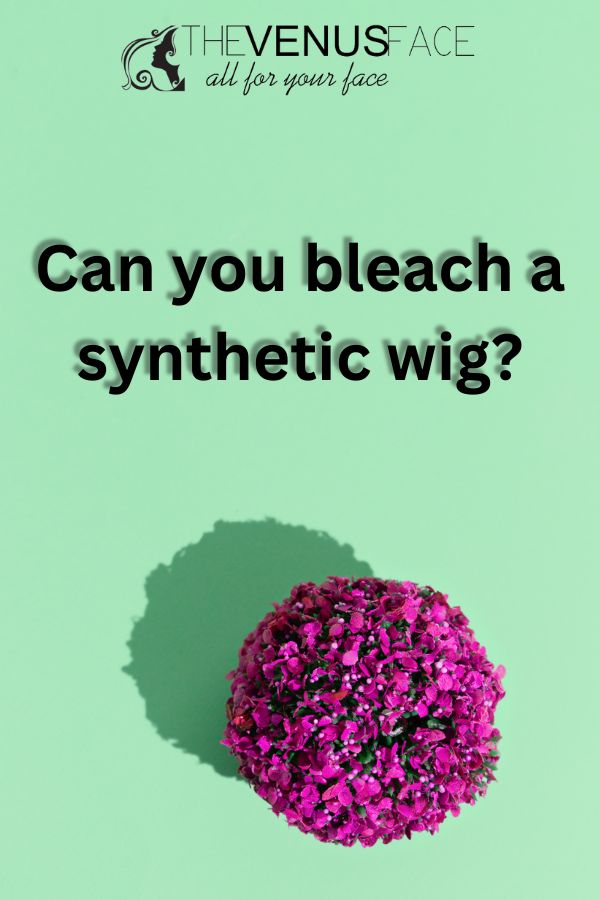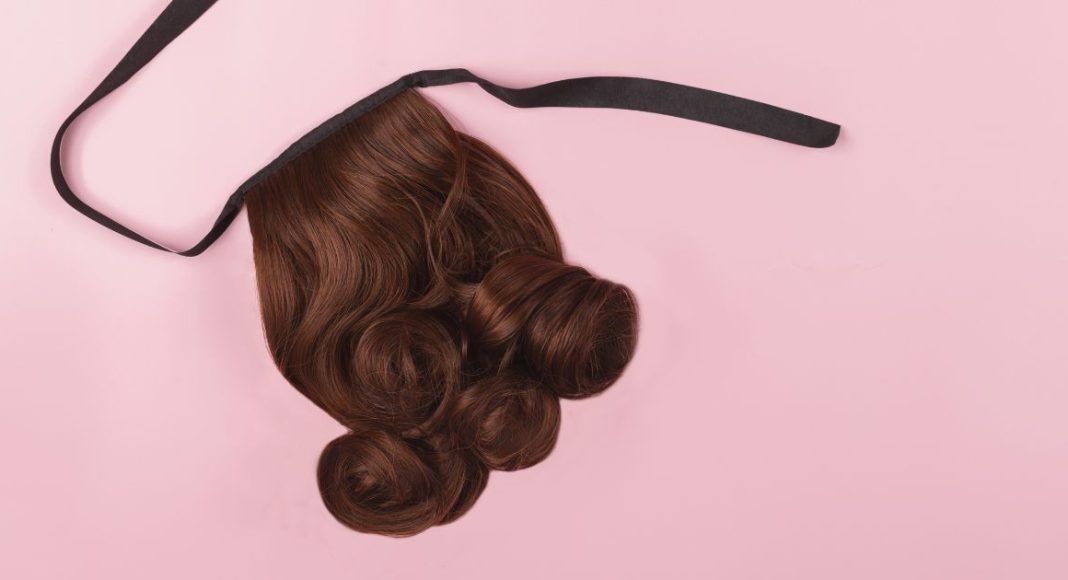As someone who’s all about giving wigs that personal touch, I get the curiosity around bleaching synthetic strands. You know, we’ve got the whole deal with human hair being a champ with different treatments, but what about our synthetic pals? Well, let’s dive into the nitty-gritty of bleaching synthetic wigs – understanding what these fibers are made of and how to safely lighten them. Whether you’re eyeing a cool ombre, an all-over lighter vibe, or some vibrant highlights, let’s go on this journey together. We’ll unravel the ins and outs of bleaching synthetic wigs, discovering the cool possibilities and, of course, the quirks that come with giving your wig that unique, tailored look!

Can you bleach a synthetic wig?
Yes, it is possible to bleach synthetic wigs, but it is not commonly recommended. Bleaching synthetic hair involves a process that removes color from the strands, and it can be challenging. The synthetic fibers may not react well to the chemicals used in the bleaching process, leading to potential damage to the wig. While some sources suggest using hydrogen peroxide and baking soda in specific proportions for bleaching synthetic wigs, it’s essential to approach this cautiously. The process can be difficult, and there’s a risk of compromising the integrity of the synthetic strands.
How to bleach a synthetic wig properly?
Bleaching a synthetic wig is possible, but it’s a delicate process that requires caution. While traditional hair bleach may not be as effective on synthetic fibers, a common method involves using a mixture of hydrogen peroxide and baking soda. Here’s a general guide:
Prepare the mixture
To prepare the mixture for bleaching a synthetic wig, it’s essential to create a blend that is both effective and safe for the delicate synthetic fibers. Begin by measuring 1½ teaspoons of a 3% hydrogen peroxide solution and combining it with 2 teaspoons of baking soda. This concoction forms the base for the bleaching process and should be mixed thoroughly until it reaches a consistent texture. The hydrogen peroxide acts as a lightening agent, while the baking soda helps enhance the lifting effect. It’s crucial to wear protective gloves during this step to shield your hands from the chemicals. The accuracy of the measurements and the thorough mixing of the components are vital to ensure an even application of the bleach onto the synthetic wig. This mixture, when applied properly, initiates the color removal process, giving you control over the lightening effect on the wig’s synthetic fibers.
Apply the mixture
Once the bleach mixture is prepared, the next step is the careful application onto the synthetic wig. Wearing protective gloves, gently and evenly apply the mixture to the desired areas of the wig where you intend to achieve a lightening effect. Use a brush or applicator for precise application, ensuring that each strand is adequately coated. The goal is to cover the targeted sections thoroughly while avoiding excessive saturation, as synthetic fibers can be sensitive to chemical treatments. Take your time during this step to guarantee an even distribution, and be attentive to any color changes as the mixture is applied. The application process is a crucial phase in achieving the desired result, and a meticulous approach will contribute to a more uniform and controlled bleaching outcome on the synthetic wig.
Let it sit
Allow the mixture to permeate the synthetic fibers for a specified duration, typically around 30 minutes. This waiting period is essential for the hydrogen peroxide and baking soda to work their lightening magic. However, it’s important to exercise caution and monitor the process closely. Synthetic wigs can react differently to bleach, and the waiting time may vary based on factors such as the wig’s material and the desired lightening effect. Regularly check the wig during this interval to ensure that the bleaching is progressing as expected and to prevent over-processing, which could lead to damage. This waiting period is a delicate balance between achieving the desired lightening and preserving the integrity of the synthetic fibers, emphasizing the need for careful observation throughout the entire process.
Rinse and dry
Once the designated waiting period has elapsed, the next crucial step in the synthetic wig bleaching process is to thoroughly rinse and dry the wig. Begin by carefully rinsing the wig with cold water to remove the bleach mixture. Cold water is preferred as it helps to close the hair cuticles and reduce damage. Ensure that all traces of the bleach are completely washed out. Gently pat the wig dry with a clean towel to remove excess water, avoiding any vigorous rubbing that could potentially damage the synthetic fibers. Following the rinse, allow the wig to air dry naturally. Avoid heat styling immediately after bleaching, as the synthetic fibers may be more vulnerable during this post-bleaching phase. Proper rinsing and drying are essential to complete the process, leaving you with a beautifully bleached synthetic wig with a minimized risk of damage or color alteration
Monitor the process
During the bleaching process of a synthetic wig, monitoring is a crucial aspect to ensure optimal results without compromising the wig’s integrity. Keep a close eye on the wig while the bleach mixture is working, checking for any signs of color change and assessing the lighting effect. Regular observations help prevent over-processing, a risk that could lead to damage or an uneven color outcome. The monitoring phase involves a delicate balance between achieving the desired lightening and preserving the synthetic fibers’ quality. If you notice that the wig is lightening too quickly or unevenly, it might be necessary to rinse it off before the recommended time. This attentive approach allows for adjustments as needed, contributing to a successful and controlled bleaching process that enhances the appearance of the synthetic wig.
Can you bleach a wig with Clorox?
Bleaching a wig with Clorox (or any household bleach) is not recommended. Clorox contains harsh chemicals that can be extremely damaging to both human and synthetic hair. Synthetic wigs are made of delicate materials, often acrylic fibers, which are prone to damage when exposed to strong chemicals like bleach. Instead of using Clorox, it’s advised to use safer and specifically formulated products for wig maintenance and coloring. Some sources suggest using baking soda and hydrogen peroxide for bleaching synthetic wigs. Additionally, caution should be exercised to protect the wig’s hairline and cap during the bleaching process, with recommendations including the use of plastic wrap. If you’re considering altering the color of your wig, it’s best to follow a more gentle and wig-friendly bleaching process.
Will bleach melt synthetic hair?
Yes, bleach can potentially melt or damage synthetic hair. Synthetic fibers used in wigs are often made of materials like acrylic or other polymers, which can be sensitive to harsh chemicals such as bleach. When exposed to bleach, synthetic hair may melt, lose its texture, or become damaged. It’s crucial to exercise caution when considering bleaching synthetic hair, as the process can lead to irreversible harm. While there are methods for bleaching synthetic wigs, they require careful attention to prevent over-processing and damage to the fibers. It’s recommended to follow specific guidelines and use gentle techniques to minimize the risk of melting or altering the texture of synthetic hair during the bleaching process.
Conclusion
Bleaching synthetic wigs offers creative possibilities but requires caution due to the delicate nature of synthetic fibers. Proper preparation, application, monitoring, and gentle rinsing are crucial for success. The use of household bleach, like Clorox, is discouraged as it can cause irreversible damage. The risk of melting or altering the texture underscores the need for adherence to specific guidelines and gentle techniques. Achieving a beautifully transformed and well-maintained wig involves finding a delicate balance between creativity and preservation.


